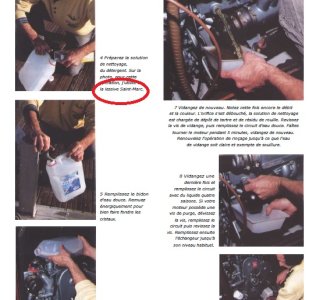vyv_cox
Well-Known Member
I have many similar photos from engines all around the world, mostly large. Gas engines, diesel generators, etc. Some in Oman, where they chose not to use any coolant other than water, were particularly bad.BTW, cavitation is not a Formula 1 thing, it is an HD diesel thing. The pistons slap the wall and cause cavitation on the reveres side. In general, it is a problem only with wet sleeve engines that are run at high load factors. OA coolants do better than inorganics. It is a very uncommon problem in recreational boats, but not unheard of and is considered in the coolant spec.


